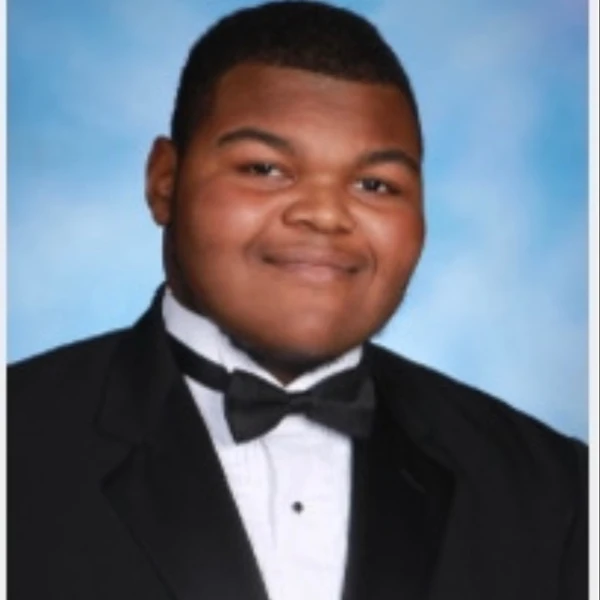
Hobbies and interests
Astronomy
Astrophysics
Biology
Chemistry
Coding And Computer Science
3D Modeling
Combat Sports
Community Service And Volunteering
Gaming
Martial Arts
Mathematics
Key Club
Geology
Model UN
Movies And Film
STEM
Tutoring
Writing
Reading
Academic
Adventure
Anthropology
Folklore
Horror
Leadership
Self-Help
Science
Science Fiction
Literature
I read books multiple times per month
US CITIZENSHIP
US Citizen
EzraVon Young
3,025
Bold Points
EzraVon Young
3,025
Bold PointsBio
Hello, I’m an aspiring Astrophysicist majoring in Astrophysics and Planetary Science at Rutgers University. As the second member of my family to attend college, my hope is to stand as an inspiration to my family and community to pursue their dreams despite the challenges that try to intercept them.
Education
Rutgers University-New Brunswick
Bachelor's degree programMajors:
- Geological/Geophysical Engineering
- Physical Sciences, Other
Ewing High School
High SchoolMiscellaneous
Desired degree level:
Bachelor's degree program
Graduate schools of interest:
Transfer schools of interest:
Majors of interest:
- Physical Sciences, Other
- Geological/Geophysical Engineering
Career
Dream career field:
Research
Dream career goals:
Become an astrophysics professor and win a nobel prize by 2050
Sports
Mixed Martial Arts
Club2015 – 20238 years
Awards
- Brown Belt Certificate of Rank
Public services
Volunteering
Ewing High School — Peer Tutoring2025 – 2025Volunteering
Rise Against Hunger — Meal preparation2024 – 2024Volunteering
Salvation Army — Bell Ringer2022 – 2022
Future Interests
Volunteering
Philanthropy
Entrepreneurship
Learner Calculus Scholarship
The foundations of calculus were developed by Isaac Newton and Gottfried Wilhelm Leibniz upon the understanding that creating variables through algebra wasn’t enough to solve problems that studied rates on the infinitesimal scale. To understand physics and optics, Isaac Newton needed to understand how a quantity’s rate of change related to the quantity itself, which led to the publication of Newton’s Method of Fluxions; Newton described fluxions as the rate of change while fluents were the quantity. On the other hand, Gottfried Wilhelm Leibniz focused on infinitesimal quantities which served as his foundation for differential and integral calculus. With both contributions, concepts such as the fundamental theorem of calculus and higher derivatives were invented, ultimately accumulating to the completion of the calculus we know and love today.
All of STEM builds on rates, from physics to engineering, the development of mankind can be attributed to understanding how one thing will change in relation to another. Calculus is fundamental to my education as a Rutgers University student in the pursuit of an Astrophysics degree; throughout my education I’ll have to understand the instantaneous changes in orbits or stellar fluctuations to monitor how they’ll affect our planet. Mathematicians such as Katherine G. Johnson needed to understand calculus in order to know the rate of change between Friendship 7’s trajectory over time to understand where the vessel would go and calculate how to bring John Glenn home, all without a calculator. On the opposite scale, calculus has contributed to quantum mechanics through deriving the behavior of quantum systems, finding the energy of an electron, and creating a mathematical representation for quantum phenomena. One of the best examples of calculus in quantum physics was Max Planck’s work with blackbody radiation. Planck used calculus to understand the energy distribution over time and developed his radiation law by observing how that energy is distributed into different wavelengths over a blackbody. On our scale of living, engineers use calculus to understand how the instantaneous rate of stress on a material changes once a certain force is applied, then also use calculus to optimize the amount of material to use within a certain area to minimize cost and maximize effectiveness. Before the age of computer aided design, Nikola Tesla was an expert in visualizing calculus equations in his head to develop effective models for his inventions; specifically, in his pursuit of developing AC systems he was able to create his own calculus equations to optimize his models of generators, transformers, and motors to maximize power output, all while saving on resources using mental mathematics.
Overall, whether it’s used to calculate the trajectory of the solar system, optimize the area of house compared to the area of the land, or find the change in wavelength as a photon travels, calculus is used all around us and has laid the foundation for inventions that make us Earth’s smartest species.